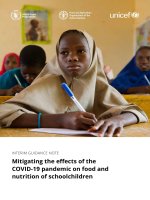On food and cooking the science and lore of the kitchen ( PDFDrive ) 476
Bạn đang xem bản rút gọn của tài liệu. Xem và tải ngay bản đầy đủ của tài liệu tại đây (115.35 KB, 2 trang )
air,andrunthemontheenergyinsunlight.
Animals,ontheotherhand,can’textract
energyandconstructcomplexmoleculesfrom
suchprimitivematerials.Theymustobtain
thempremade,andtheydosobyconsuming
otherlivingthings.Plantsareindependent
autotrophs,whileanimalsareparasitic
heterotrophs.(Parasitismmaynotsound
especiallyadmirable,butwithoutitthere
wouldbenoneedtoeatandsononeofthe
pleasuresofeatingandcooking!)
Therearevariouswaysofbeingan
autotroph.Somearchaicbacteria,whichare
microbesconsistingofasinglecell,
manipulatesulfur,nitrogen,andiron
compoundstoproduceenergy.Themost
importantdevelopmentforthefutureof
eatingcamemorethan3billionyearsago
withtheevolutionofabacteriumthatcould
taptheenergyinsunlightandstoreitin
carbohydratemolecules(moleculesbuiltfrom
carbon,hydrogen,andoxygen).Chlorophyll,
thegreenpigmentweseeinvegetationall
aroundus,isamoleculethatcapturessunlight
andinitiatesthisprocessofphotosynthesis,
whichculminatesinthecreationofthesimple
sugarglucose.
6CO2+6H2O+lightenergy C6H12O6+
6O2
carbondioxide+water+lightenergy
glucose+oxygen
The bacteria that managed to “invent”
chlorophyll gave rise to algae and all green
land plants — and indirectly to land animals
as well. Before photosynthesis, the earth’s
atmosphere contained little oxygen, and the
sun’skillingultravioletrayspenetratedallthe
way to the ground and several feet into the
oceans. Living organisms could therefore
survive only in deeper waters. When
photosynthetic bacteria and early algae









